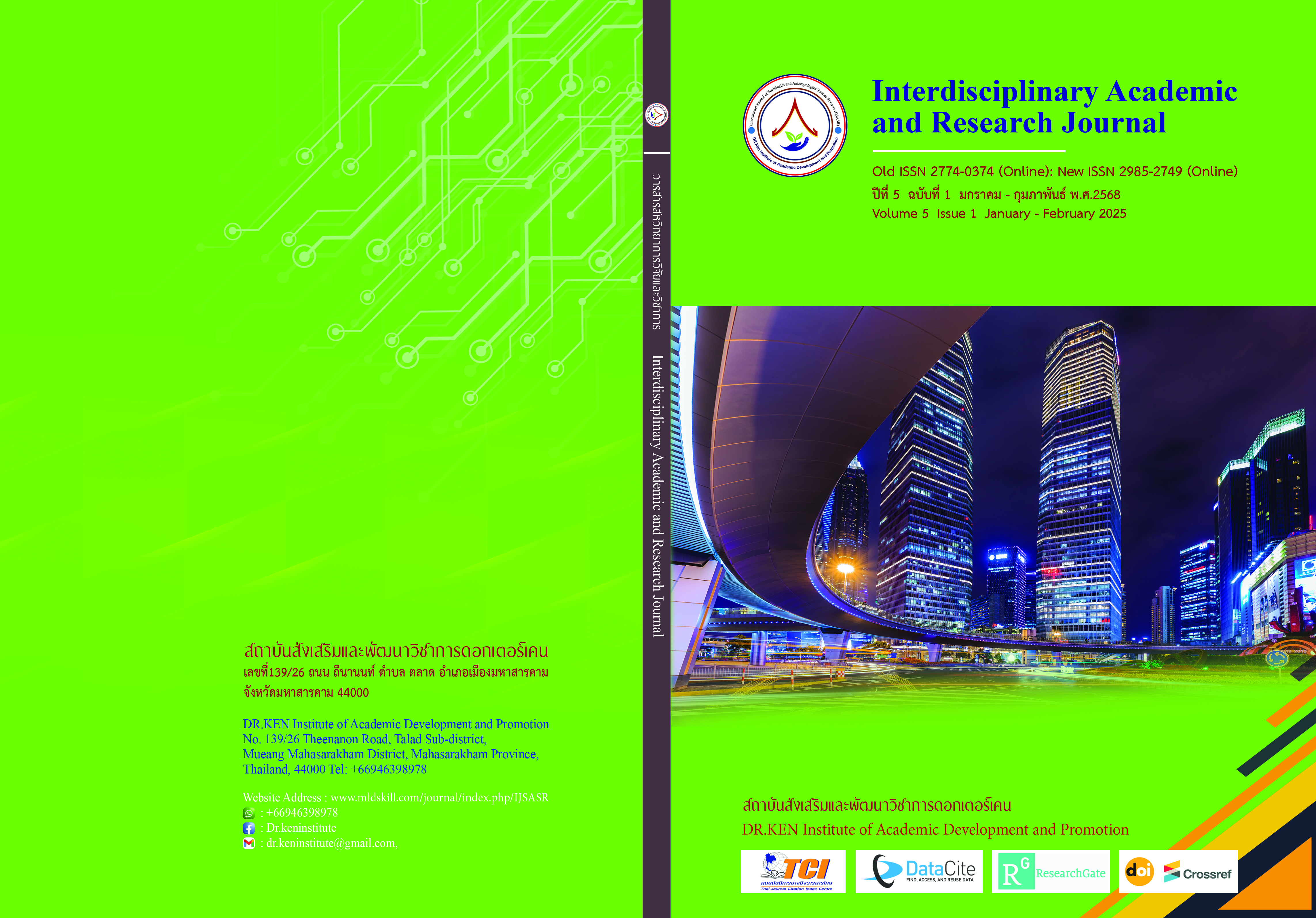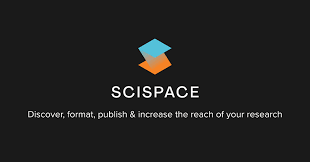Guidelines for Developing Wellness Spa Facilities for Tourism in Chiang Mai
DOI:
https://doi.org/10.60027/iarj.2025.279966Keywords:
Wellness tourism, Wellness spa, Service quality, Customer satisfactionAbstract
Background and Aims: Wellness tourism is gaining popularity, particularly in Chiang Mai province, which has natural and cultural resources suitable for wellness spa businesses. However, there are challenges in improving quality and service standards. This study aimed to investigate: 1) foreign tourists' perception and satisfaction levels with health spa services in Chiang Mai, 2) the influence of service use perception on satisfaction, and 3) strategies for developing health spa establishments for tourism in Chiang Mai.
Methodology: The study employed a mixed-method approach. Quantitative research involved a questionnaire distributed to foreign tourists using spa services in Chiang Mai. The questionnaire had an IOC value of 0.80 and a confidence value of 0.968. This qualitative research employed purposive sampling with 18 informants: 6 spa entrepreneurs (in-depth interviews) and 12 tourism and spa experts (focus groups). Data analysis utilized descriptive and inferential statistics, including t-test, ANOVA, and Multiple Regression Analysis.
Results: 1) The perception of spa standards was high (Mean = 3.87), with service scoring highest (Mean = 4.09), followed by marketing (Mean = 3.85) and management (Mean = 3.67). 2) The perception of spa standards significantly positively influenced satisfaction. The three independent variables explained 52.4% of the variance in satisfaction. 3) Guidelines for developing wellness spa facilities for tourism in Chiang Mai: blend culture with innovation, develop staff, utilize technology, promote sustainability, build partnerships. Consider standard implementation, adaptability, and international competition.
Conclusion: To develop wellness spas in Chiang Mai, focus should be on improving service quality and creating a distinctive identity by blending Lanna culture with service innovation. Enhancing personnel skills in massage techniques is crucial for creating impressive customer experiences. Additionally, emphasis should be placed on marketing and management development to increase the competitiveness of the wellness spa business in Chiang Mai.
References
การท่องเที่ยวแห่งประเทศไทย. (2565). สถิติการท่องเที่ยวภายในประเทศ ปี 2564. กรุงเทพฯ: กองเศรษฐกิจการท่องเที่ยวและกีฬา.
กิตติพงษ์ ศรีสุวรรณ. (2567). ปัจจัยที่มีผลต่อความพึงพอใจต่อการใช้บริการสปาเพื่อสุขภาพของนักท่องเที่ยวชาวไทย: กรณีศึกษาจังหวัดเชียงใหม่. วารสารบริหารธุรกิจ มหาวิทยาลัยบูรพา, 44(2), 137-156.
งามนิจ แสนนำพล, มณวิภา ยาเจริญ และจารุณี ศรีบุรี. (2566). รูปแบบการท่องเที่ยวสุขภาพเชิงสร้างสรรค์ที่ชุมขนตำบลป่าเมี่ยง อำเภอดอยสะเก็ด จังหวัดเชียงใหม่.วารสารวิชาการวิทยาลัยบริหารศาสตร์, 6(3), 152-166.
ธนกฤต สังข์เฉย. (2564). แนวโน้มการใช้บริการสปาและนวดแผนไทยของนักท่องเที่ยวต่างชาติหลังสถานการณ์โควิด-19. วารสารวิทยาการจัดการ มหาวิทยาลัยราชภัฏเชียงราย, 16(2), 1-22.
ธนาคารแห่งประเทศไทย สำนักงานภาคเหนือ. (2566). รายงานเศรษฐกิจและการเงินภาคเหนือ ไตรมาส 4 ปี 2565. เชียงใหม่: ธนาคารแห่งประเทศไทย.
นันทิยา ขำคมเขตต์. (2565). การท่องเที่ยวเชิงสุขภาพนวดและสปาสมุนไทยของนักท่องเที่ยวชาวจีนในประเทศไทย. สารนิพนธ์หลักสูตรปริญญาอักษรศาสตรบัณฑิต สาขาวิชาเอเชียศึกษา คณะอักษรศาสตร์, มหาวิทยาลัยศิลปากร.
ปิยะนุช แสงทอง. (2564). การศึกษาความพึงพอใจของลูกค้าต่อบริการสปาเพื่อสุขภาพในจังหวัดเชียงใหม่. วารสารการท่องเที่ยว มหาวิทยาลัยบูรพา, 32(2), 121-138.
พิมพ์ลภัส พงศกรรังศิลป์. (2565). ความพึงพอใจของนักท่องเที่ยวต่างชาติต่อการใช้บริการสปาเพื่อสุขภาพในประเทศไทย. วารสารวิชาการการท่องเที่ยวไทยนานาชาติ, 18(1), 78-95.
วรรณวิมล คงสุวรรณ. (2565). ปัจจัยที่มีผลต่อการตัดสินใจใช้บริการสปาเพื่อสุขภาพของนักท่องเที่ยวต่างชาติในประเทศไทย. วารสารวิชาการการท่องเที่ยวไทยนานาชาติ, 18(2), 45-62.
สมาคมไทยล้านนาสปา. (2567). รายชื่อสถานประกอบการสปาที่ได้รับการรับรองมาตรฐานในจังหวัดเชียงใหม่. เชียงใหม่: สมาคมไทยล้านนาสปา.
สมาคมสปาไทย. (2566). ประเภทของสปาในประเทศไทย. สืบค้นเมื่อ 2 เมษายน 2567, จาก https://thaispaassociation. com/types-of-spas-in-thailand/.
สมิต สัชฌุกร. (2566). การต้อนรับและการบริการที่เป็นเลิศ. กรุงเทพฯ: สายธาร.
สุภาภรณ์ พลนิกร, พิชัย รัตนจินดามณี, และ วิไลวรรณ วัฒนาชัย. (2564). พฤติกรรมการใช้บริการสปาเพื่อสุขภาพของนักท่องเที่ยวชาวต่างชาติในประเทศไทย. วารสารวิทยาการจัดการ, 38(1), 1-20.
สุวรรณี ม่วงขาว และวิชาชาติ ศรีทอง. (2562). การนำเสนอภูมิปัญญาล้านนาผ่านการท่องเที่ยวเชิงสุขภาพ: กรณีศึกษาสปาในจังหวัดเชียงใหม่. วารสารมนุษยศาสตร์และสังคมศาสตร์ มหาวิทยาลัยราชภัฏเชียงใหม่, 4(1), 103-120.
แสงอรุณ วรากุลศิริศักดิ์ และอุมาวรรณ วาทกิจ. (2564). คุณภาพการบริการที่มีความสัมพันธ์กับการสื่อสารแบบบอกต่อของธุรกิจสปาในเขตเทศบาลเมืองมหาสารคาม จังหวัดมหาสารคาม. วารสารวิชาการและวิจัย มหาวิทยาลัยภาคตะวันออกเฉียงเหนือ, 11(1), 87-99.
Aaker, D. A. (1991). Managing brand equity: Capitalizing on the value of a brand name. New York: Free Press.
Bitner, M. J., Zeithaml, V. A., & Gremler, D. D. (2008). Technology’s Impact on the Gaps Model of Service Quality. In Service Science, Management and Engineering Education for the 21st Century (pp. 197-218). Springer, Boston, MA.
Brinkmann, S., & Kvale, S. (2015). InterViews: Learning the craft of qualitative research interviewing (3rd ed.). Sage Publications.
Chiang Mai Health Tourism Association. (2021). Annual report 2021. Chiang Mai: Chiang Mai Provincial Office of Tourism and Sports.
Chongsitjiphol, S. & Wongmonta, S. (2021). Potential of Wellness Spa Business in the Eastern Region of Thailand to Be a Hub of Health Tourism. Nimit Mai Review, 4(1), 1-18.
Cochran, W. G. (1977). Sampling techniques (3rd ed.). John Wiley & Sons.
Creswell, J. W. (2013). Qualitative inquiry and research design: Choosing among five approaches (3rd ed.). Sage Publications.
Creswell, J. W., & Plano Clark, V. L. (2017). Designing and conducting mixed methods research (3rd ed.). Sage Publications.
Davis, F. D. (1989). Perceived usefulness, perceived ease of use, and user acceptance of information technology. MIS Quarterly, 13(3), 319–340.
Festinger, L. (1954). A theory of social comparison processes. Human Relations, 7(2), 117-140.
Gronroos, C. (1984). A service quality model and its marketing implications. European Journal of Marketing, 18(4), 36-44.
Gronroos, C. (2015). Service Management and Marketing: Managing the Service Profit Logic. John Wiley & Sons.
Guest, G., Bunce, A., & Johnson, L. (2006). How many interviews are enough? An experiment with data saturation and variability. Field Methods, 18(1), 59-82.
Hair, J. F., Black, W. C., Babin, B. J., & Anderson, R. E. (2018). Multivariate data analysis. (8th ed.). Cengage Learning.
International Spa Association. (2023). What is a Spa? Retrieved April 2, 2024, from https://experienceispa.com/spa-goers/spa-101/what-is-a-spa.
Kotler, P., & Armstrong, G. (2018). Principles of Marketing (17th Edition). Pearson Education.
Kotler, P., & Keller, K. L. (2016). Marketing management. (15th ed.). Pearson.
Krippendorff, K. (2018). Content analysis: An introduction to its methodology. (4th ed.). Sage Publications.
Lee, H. & Lim, C. (2021). International health standards and their implications for spa services in tourist destinations. Global Health Review, 8(1), 10-24.
Lee, S., & Park, S. Y. (2023). The moderating effect of perceived luxury on the relationship between service quality and customer satisfaction in the spa industry: An empirical study in South Korea. Journal of Business Research, 152, 1114-1124.
Lee, Y., & Park, S. (2024). The impact of digitalization on the spa industry: A global perspective. International Journal of Spa and Wellness, 12(1), 1-15.
Likert, R. (1932). A technique for the measurement of attitudes. Archives of Psychology, 22(140), 1-55.
Liu, F., & Chang, Y. (2021). Tourists' experiences and preferences: A deep dive into Chiang Mai's health and wellness tourism sector. International Journal of Tourism Research, 23(2), 210-223.
Natthawut, P., & Phutthichai, R. (2022). Factors affecting decision to use spa services in Chiang Mai. Ratchaphak Journal, 16(37), 75-84.
Nunnally, J. C., & Bernstein, I. H. (1994). Psychometric theory. (3rd ed.). McGraw-Hill.
Oliver, R. L. (2014). Satisfaction: A behavioral perspective on the consumer. (2nd ed.). Routledge.
Parasuraman, A., Zeithaml, V. A., & Berry, L. L. (1985). A conceptual model of service quality and its implications for future research. Journal of Marketing, 49(4), 41-50.
Parasuraman, A., Zeithaml, V. A., & Berry, L. L. (1988). SERVQUAL: A Multiple-Item Scale for Measuring Consumer Perceptions of Service Quality. Journal of Retailing, 64(1), 12-40.
Patton, M. Q. (2002). Qualitative research and evaluation methods. (3rd ed.). Sage Publications.
Patton, M. Q. (2015). Qualitative research & evaluation methods: Integrating theory and practice (4th ed.). Sage Publications.
Pinthong, S., & Pongwat, S. (2022). Exploring the service quality factors of spa business in Pattaya, Thailand. Journal of Tourism and Hospitality Management, 22(1), 24-35.
Shen, S., Sotiriadis, M., & Zhou, Q. (2020). Could smart tourists be sustainable and responsible as well? The contribution of social networking sites to improving their sustainable and responsible behavior. Sustainability, 12(4), 1470
Smith, A., & Williams, B. (2022). The importance of sustainability practices in the spa industry: A study of consumer preferences in the United States. Journal of Sustainable Tourism, 32(4), 1021-1038.
Szymanski, D. M., & Henard, D. H. (2001). Customer satisfaction: A meta-analysis of the empirical evidence. Journal of the Academy of Marketing Science, 29(1), 16-35.
Wang, Y., & Zhang, L. (2022). The influence of green practices on customer satisfaction and loyalty in the spa industry: A study based on mediating effect of perceived service quality. International Journal of Contemporary Hospitality Management, 34(8), 3062-3082.
Williams, R. M., & Smith, L. C. (2019). Spa tourism and its economic impact on Chiang Mai's local economy. International Journal of Hospitality Management, 76, 89-98
Wong, B. L. (2020). Consumer expectations and perceptions of health services in Chiang Mai's top-rated spas. Journal of Service Quality, 22(1), 65-78.
Xu, Y. (2024). The influence of perceived service quality on customer satisfaction and loyalty in the spa industry: An international study. Journal of International Business Research, 25(2), 245-267.
Yang, C. C., & Chen, Y. C. (2023). The impact of service quality and perceived value on customer satisfaction and repurchase intention in the spa industry: A study based on the theory of planned behavior. Asia Pacific Journal of Tourism Research, 28(4), 598-614.
Downloads
Published
How to Cite
Issue
Section
License
Copyright (c) 2025 Interdisciplinary Academic and Research Journal

This work is licensed under a Creative Commons Attribution-NonCommercial-NoDerivatives 4.0 International License.
Copyright on any article in the Interdisciplinary Academic and Research Journal is retained by the author(s) under the under the Creative Commons Attribution-NonCommercial-NoDerivatives 4.0 International License. Permission to use text, content, images, etc. of publication. Any user to read, download, copy, distribute, print, search, or link to the full texts of articles, crawl them for indexing, pass them as data to software, or use them for any other lawful purpose. But do not use it for commercial use or with the intent to benefit any business.
















.png)


